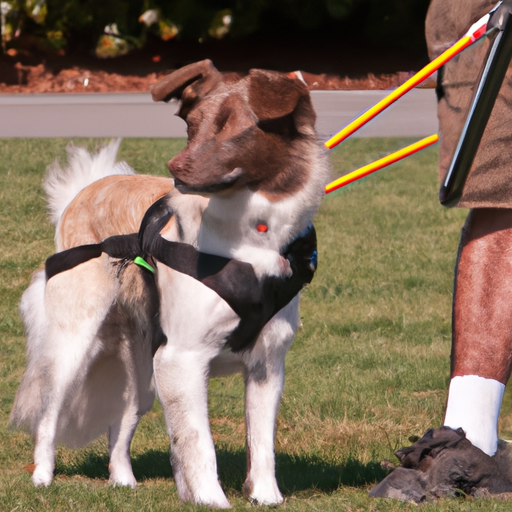Understanding Your Blind Dog’s Needs
Blind dogs are just as capable and deserving of a happy, fulfilling life as any other dog. However, they do require a more specific kind of care and understanding. As a caregiver, it’s your task to step into their world and aid them in maneuvering through it.
- Their world is different: They perceive the world differently than sighted dogs. They rely more on their senses of smell and hearing.
- They learn differently: Training blind dogs needs to be approached in a unique way, using their heightened senses to your advantage.
- They need consistency: Keeping their environment as consistent as possible can make a huge difference in helping them feel comfortable.
Training Basics
Now that you understand their unique needs, let’s delve into the basic training you should focus on.
- Orientation Training: This includes familiarizing your dog with their surroundings. Use scented markers to help them identify different areas of the house.
- Obedience Training: This is crucial for any dog, but particularly for blind ones. Commands like ‘stop’, ‘stay’ and ‘come’ become lifelines.
- Socialization: It’s equally important to socialize your blind dog. Introduce them to new people, animals, and environments gradually and carefully.
Using Scent and Sound Cues
Your blind dog’s world is guided by their senses of smell and hearing. Here’s how you can effectively use scent and sound cues for training:
| Scent Cues | Sound Cues |
|---|---|
| Use different scented oils for different rooms | Use bells or specific sound makers for different commands |
| Use food to guide them | Use your voice to constantly communicate with them |
| Use scented toys for playtime | Use clicker training |
Coping with Challenges
Training a blind dog can bring about unique challenges. Here are some tips to help you cope:
- Patience is key: Remember, it might take a little longer for your dog to learn new things. Be patient and keep trying.
- Be their guide: Your dog might bump into things or get lost. Don’t panic. Calmly guide them back to safety.
- Be positive: Celebrate their successes, no matter how small. Positive reinforcement goes a long way.
Frequently Asked Questions
Q: Can blind dogs live a happy life?
A: Absolutely. With the right training and care, blind dogs can lead a fulfilling and happy life.
Q: What causes blindness in dogs?
A: Blindness in dogs can be a result of several factors including age, disease, or injury.
Q: Is it harder to train a blind dog?
A: It can be challenging, but with patience, consistency, and the right techniques, training a blind dog is certainly achievable.
Q: Can blind dogs play?
A: Yes, blind dogs can and should play. Use scent-based toys or toys that make noise for them to enjoy playtime.
Q: Should I change my home layout for my blind dog?
A: Keeping a consistent environment is crucial for blind dogs. It’s best to avoid moving furniture or their belongings frequently.
By understanding and embracing their unique needs, you can enrich your blind dog’s life and strengthen the bond between you. It may be a journey filled with challenges, but it’s also one filled with love, patience, and mutual understanding.



